
Anthia is a genus of the ground beetle family (Carabidae). Species of Anthia can spray a jet of formic acid up to 30 centimetres (12 in), which if not treated, can cause blindness in animals which harass the beetles.
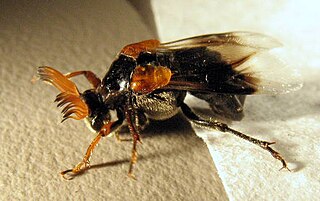
Ripiphoridae is a cosmopolitan family of some 450 described species of beetles sometimes called "wedge-shaped beetles". Ripiphoridae are unusual among beetle families in that many species are hypermetamorphic parasitoids, an attribute that they share with the Meloidae. Members of the family differ in their choice of hosts, but most attack various species of bees or wasps, while some others attack cockroaches.

The subfamily Aphaeninae is a group of hemipteran insects, especially abundant and diverse in the tropics. They belong to the Fulgoridae (fulgorids), though they are not among the better-known members of that family that are called "lantern bugs" or "lanternflies". In 2009, the first molecular analysis of the Fulgoridae challenged the existing structure of eight currently recognized subfamilies and eleven tribes.
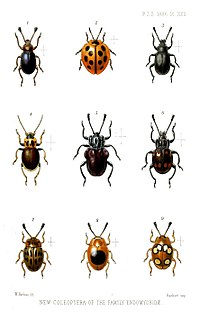
Endomychidae, or handsome fungus beetles, is a family of beetles with representatives found in all biogeographic realms. There are around 120 genera and 1300 species. The family was established based on the type genus Endomychus, a genus erected in 1795 by Panzer which was applied to a species that Linnaeus called Chrysomela coccinea. As the common name suggests, Endomychidae feed on fungi. Crowson, in his influential treatment of the beetles, placed the family within the Cucujoidea. They have a tarsal formal of 4-4-4 or 3-3-3 and the wings lack a closed radial cell. The second antennal segment has a sensory appendage that is as long as the third antennal segment. The family has also been grouped with the Coccinellidae in a group called the Trimera for having pseudotrimerous tarsi. A 2015 molecular phylogeny study found that the Cucujoidea were found to be non-monophyletic and the Endomychidae was refined with the removal of the Anamorphinae from within the family and elevated to the status of a full family, Anamorphidae. Mycetaeinae and Eupsilobiinae were also found not to belong within the clades of the core Endomychidae, and likewise reclassified into the families Mycetaeidae and Eupsilobiidae.

Ceroglossus is a genus of beetles in the family Carabidae, containing the following species: Members of this genus are restricted to Chile and Argentina.

Pompilus is a genus of spider wasps in the family Pompilidae, the members of which prey on spiders. There are seven species recognised in Pompilus sensu stricto. It is the type genus of the family Pompilidae and the subfamily Pompilinae.

Cantharocnemis is a genus of longhorn beetles of the subfamily Prioninae. The species in the genus are mainly found in Africa with a few species in Asia.
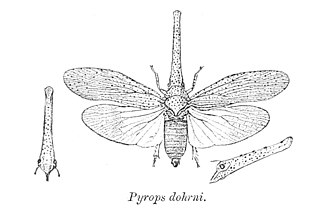
Zanna is a genus of tropical lantern bugs found in Asia and Africa. They are mostly grey with black speckling with a long snout with some folds on the surface. Although usually placed in the family Fulgoridae, molecular studies question this placement.

Eumorphus is a genus of beetles belonging to the family Endomychidae.

Bactrododema is a genus of the stick insect family Diapheromeridae. Species of this genus have a relictual distribution and are endemic to southern Africa.

Niphona is a genus of longhorn beetles of the subfamily Lamiinae, containing the following species:
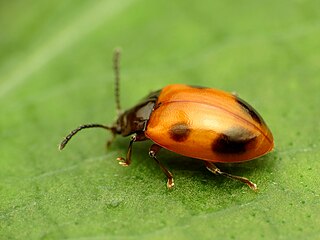
Endomychinae is a subfamily of handsome fungus beetles in the family Endomychidae. There are at least 4 genera and about 19 described species in Endomychinae.
Epipocus is a genus of handsome fungus beetles in the family Endomychidae. There are at least 20 described species in Epipocus.
Bystus is a genus of beetles in the family Anamorphidae. There are about six described species in Bystus.

Macrosiagon is a genus of wedge-shaped beetles in the family Ripiphoridae. There are more than 20 described species in Macrosiagon.
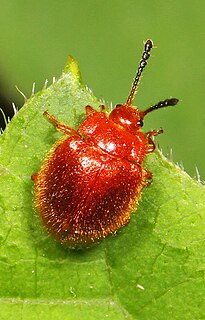
Stenotarsus is a genus of handsome fungus beetles in the family Endomychidae. There are more than 50 described species in Stenotarsus.
Desudaba is a genus of bugs in the family Fulgoridae, tribe Poiocerini and subtribe Calyptoproctina Metcalf, 1938. Records are from Australia and New Guinea.

Chromacris is a genus of lubber grasshoppers in the family Romaleidae. There are about nine described species in Chromacris, found in Mexico, Central America, and South America.
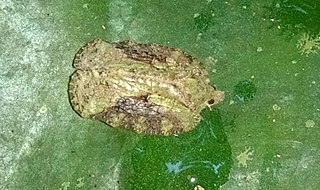
Atracis is a genus of flatid planthopper with around 60 species distributed in the Oriental Realm and tropical Africa.
Euaspis is a genus of bees belonging to the family Megachilidae.















